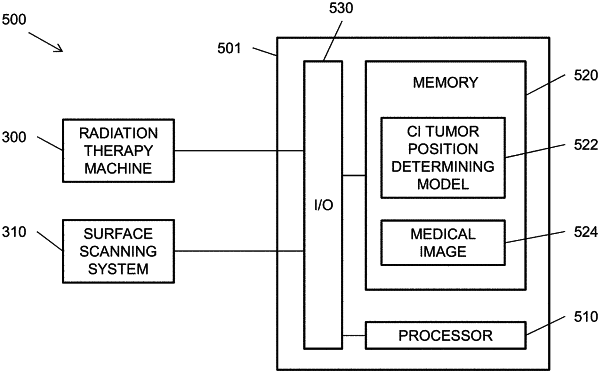| CPC A61B 6/12 (2013.01) [A61B 6/0407 (2013.01); A61B 6/08 (2013.01); A61B 6/4085 (2013.01); A61B 6/461 (2013.01); G06T 7/70 (2017.01); G06T 2207/10081 (2013.01); G06T 2207/10088 (2013.01); G06T 2207/20081 (2013.01); G06T 2207/20084 (2013.01); G06T 2207/30096 (2013.01)] | 31 Claims |

|
1. A computer-implemented method of generating a tumor position determining model, the method comprising:
providing a plurality of sets of image data, each set of image data comprises an initial training image of a tumor in a subject, an initial training two-dimensional (2D) or three-dimensional (3D) representation of a surface of the subject, a subsequent training image of the tumor in the subject and a subsequent training 2D or 3D representation of a surface of the subject, wherein
the subsequent training image and the subsequent training 2D or 3D representation are taken at a subsequent point in time than the initial training image and the initial training 2D or 3D representation; and
the plurality of sets of image data is from a plurality of different subjects; and
training, based on the plurality of sets of image data, a computer-implemented tumor position determining model to determine a subsequent position of a tumor in a subject based on a subsequent 2D or 3D representation of a surface of the subject, an initial image of the tumor in the subject and an initial 2D or 3D representation of a surface of the subject.
|